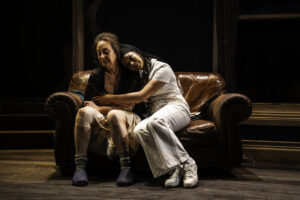Nothing seems to divide cinema lovers quite the way experimental cinema does. Say the name Terrence Malick to some cinema-goers and you see them turn white with fear. On the other hand some of us seem to love them. For years I have loved the work of filmmakers like Gus van Sant, Bill Mousoulis and Jim Stamatakos while one of my favourite cinematic moments was being able to watch Ultravox frontman John Foxx play the soundtrack and his experimental feature live at ACMI a number of years ago now.
Firmly fitting into that experimental film realm is the new film from Australian filmmaker Allison Chhorn. Titled The Plastic House the film follows what Chhorn believes her life would be like should her parents die and leave her in charge of the plastic greenhouse in which her family grows her crops.
Trying to describe the film is difficult. I can only do it by saying that it is part drama and part documentary. I guess in a way it is a mocumentary that shows how Chhorn believes her life would continue without her parents – but at the same time it is done with very little dialogue.
If you are not a fan of experimental cinema then you may find your patience tested with The Plastic House. As a fan of experimental cinema I sat there in awe at some of the amazing shots conjured up by Chhorn as she allows the audience to watch the daily chores she must undertake by herself in the greenhouse. See, not only does Chhorn write, direct and perform in this film but she also looks after all the cinematography, editing, sound design and lighting throughout the film as well. The nature of the film aside Chhorn reveals herself to be one of the most talented filmmakers working in the industry at the moment.
While watching this film I repeatedly found myself thinking what a cinematic genius Chhorn really is. Her ability to use the simplistic items found in the greenhouse to expertly frame her shots and bring mystery to nearly every shot is stunning, while her one shot reveal of her parent’s deaths is the kind of work that you expect from the cinematic masters. While simple in nature it is an under-used and creative shot that will stay with me for a long, long time.
Likewise the use of sound throughout The Plastic House is sheer beauty. From the wind moving the greenhouse to the sounds of the drones and aircraft from the nearby Air Force base Chhorn delivers a cacophony of sound that keeps the film moving and the audience’s interest spiked even when the narrative has slowed completely.
The Plastic House is not the kind of film that is going to be enjoyed by all who watch it. However, if you enjoy a film that is a little bit of a challenge to watch and has the ability to captivate its audience with stunning visuals it is certainly a film you should check out at the Sydney Film Festival.







